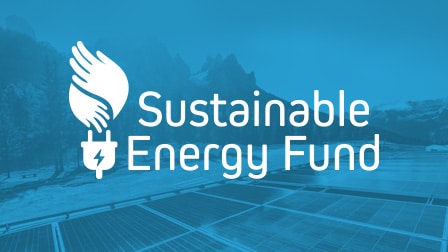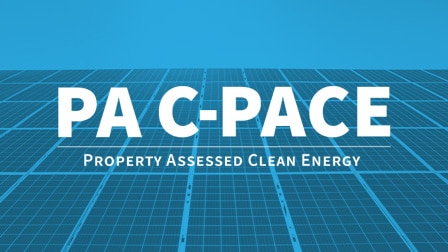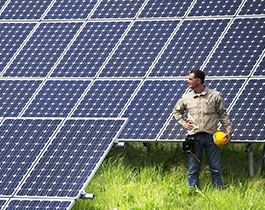Sustainable Energy Fund (SEF) is a 501(c)(3) organization dedicated to breaking down financial, educational, and regulatory...
» Read MoreHealthy Buildings
One thing this past year has taught us is that the spaces we exist in must be healthier. As we begin to reopen our public and workspaces, the areas where we congregate to eat and socialize, we search for ways we can be at greater ease within these spaces. We may understand the minimum of what we need from a “healthy” space perspective– fresh air ventilation, with filtration if necessary – but how do we build beyond our immediate needs to plan for a healthier tomorrow? Truly healthy buildings go beyond what is minimally required and work towards not only maintaining but restoring our health, the health of our communal and community spaces, and the health of our mutual environments.
What Makes a Building Healthy?
A recent Harvard report highlighted The 9 Foundations of a Healthy Building: Ventilation, Air Quality, Thermal Health, Moisture, Dust & Pests, Safety & Security, Water Quality, Noise, and Lighting & Views. Crafted from a range of perspectives, the Harvard School of Public Health drew from the experience of building owners and operators, hospital administrators, and industry professionals and their expertise to lay out the foundations for healthy spaces and the cost of not meeting those standards. The Harvard report lays out what a growing body of science has advocated for: healthy spaces account for more than indoor air quality. They encompass indoor environmental quality (IEQ) to include proper temperature and humidity, high-quality water, adequate lighting, and clean and safe spaces to live and work.
Yet these are still only ‘core elements.’ If we wish to move beyond basic health, we must reach beyond the factors that immediately influence us. We must consider how a space impacts our mental state and overall well-being and how it affects our environments. Several building standards exist to address this. While nuanced in their scopes, these standards offer new paradigms for how our built environment interacts with us and the world around us.
Passive House
The passive house concept was one of the earliest modern efforts in addressing building efficiency, seeded from early North American research in the 1970s and coming into fruition through Germany’s Institute and Performance Standard in the 1980s. Going beyond basic energy efficiency, the Passive House Standard aims to drastically reduce a building’s energy load through a highly airtight building envelope, superinsulation, high-performance windows, and proper ventilation to provide superior indoor air quality and comfort. With millions of square feet certified projects already in place, a passive house is one of the foundations for super-efficient and net-zero building design.
LEED
As we more fully understood the scope of our buildings’ footprint, the U.S. Green Building Council formed the Leadership in Energy and Environmental Design (LEED) certification in the 1990s to raise the standard for design, construction, and operation of our built environment. LEED Certification has developed the following measures: Sustainable Site Development, Water Savings, Energy and Atmosphere, Materials and Resources, Indoor Environmental Air Quality, Innovation in Design, and Regional Priority. The LEED standard considers the impact a building has on the environment as a whole and seeks to reduce that through a point system. As projects strive harder to improve their performance and reduce their impact, they can achieve higher levels of certification (Silver, Gold, Platinum) to demonstrate their commitment to occupant and environmental health.
WELL Building Standard
As an even greater understanding of our relationship with our buildings, our environment, and ourselves developed, the WELL Building Standard was created in 2013 to prioritize occupants’ health and wellness. Seeking to go beyond the physical attributes of buildings, WELL considers the intangible needs of occupants: the need for physical and mental well-being, the need for community, and the need for growth. The standard is performance-based with measurable markers to achieve and is grounded upon their Ten Concepts: Air, Water, Nourishment, Light, Movement, Thermal Comfort, Sound, Materials, Mind, Community, and Innovation. The WELL Building Standard looks to not only improve the health of building occupants but create spaces that foster occupant growth.
Living Building Challenge
Living Future Institute introduced the Living Building Challenge to establish a new standard that is net-positive in water and energy use and places a strong emphasis on responsible material sourcing and use. Its core concepts, or what they call ‘petals,’ include Place, Water, Energy, Health+Happiness, Materials, Equity, and Beauty. Also performance-based, this standard shies away from a checklist approach favoring a more holistic approach, leaning on those closest to the buildings’ designers and occupants to create and maintain a structure that restores the world around it. The Living Building Challenge seeks a regenerative approach to building that creates net-positive impacts for its occupants, the community, and the environment.
Other Standards
There are several other standards that have arisen with nuanced approaches:
Fitwel is a standard founded by the U.S. CDC and GSA and managed by the Center for Active Design. Focused on occupant health, their Health Impact Categories aims to increase physical activity, enhance access to healthy foods, promote occupant safety, instill feelings of well-being, support vulnerable populations, and positively impact the community’s health. The Fitwel standard offers a tailored approach, allowing a diverse range of applicants the ability to positively impact the health of their occupants and those around them.
BREEAM, centered in the U.K., is another standard that certifies projects based on their economic, social, and environmental sustainability. Through their certification assessments, they look to improve property investments, protect natural resources, and enhance the well-being of those who occupy them. GRESB, also centered in the U.K., takes a much more comprehensive approach. Portfolio-based, GRESB allows entities to assess and monitor the performance of real estate and infrastructure investments to transition towards greater sustainability.
The RESET Standard, another developing standard, has become “the world’s first sensor-based and performance-driven data standard and certification program for the built environment.” Grounded upon the premise of “you cannot manage what you cannot measure,” the RESET Standard utilizes high-quality data, continuous monitoring, and benchmarking to achieve Regenerative Ecological, Social, and Economic Targets.
Conclusion
Our knowledge of building science has evolved to understand better its relationship with us, our health, and the environment. We should continue to improve our living and working spaces in a way that has considerable benefits, going beyond financial or performance-based metrics to include intangible benefits that can leave us healthier and in a better position to thrive. Whether we choose to use a building standard or not, finding ways to improve and enhance our living and working spaces that go beyond ensuring our health will help us work towards a healthier, more regenerative future.







